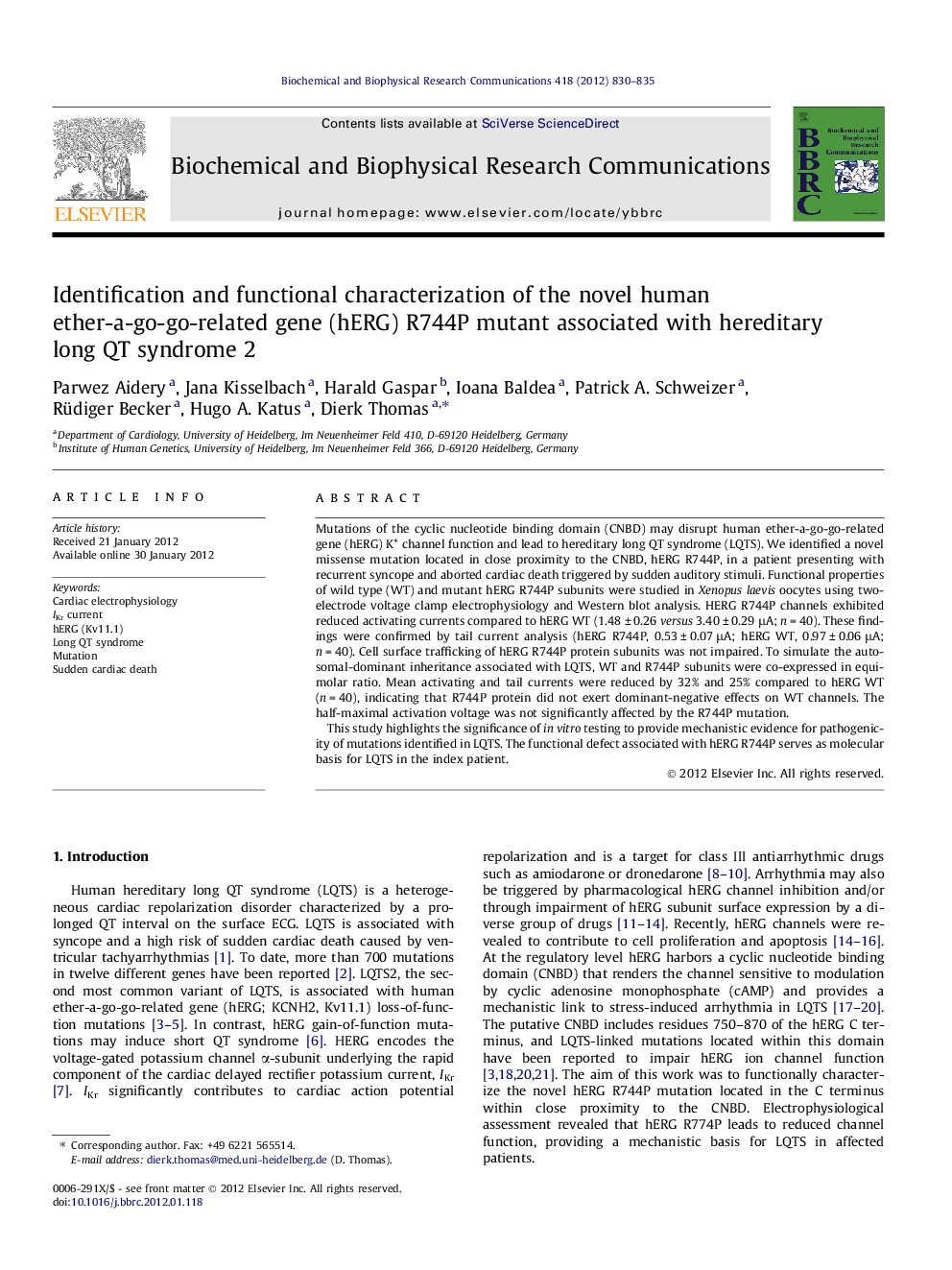| Article ID | Journal | Published Year | Pages | File Type |
|---|---|---|---|---|
| 1929919 | Biochemical and Biophysical Research Communications | 2012 | 6 Pages |
Mutations of the cyclic nucleotide binding domain (CNBD) may disrupt human ether-a-go-go-related gene (hERG) K+ channel function and lead to hereditary long QT syndrome (LQTS). We identified a novel missense mutation located in close proximity to the CNBD, hERG R744P, in a patient presenting with recurrent syncope and aborted cardiac death triggered by sudden auditory stimuli. Functional properties of wild type (WT) and mutant hERG R744P subunits were studied in Xenopus laevis oocytes using two-electrode voltage clamp electrophysiology and Western blot analysis. HERG R744P channels exhibited reduced activating currents compared to hERG WT (1.48 ± 0.26 versus 3.40 ± 0.29 μA; n = 40). These findings were confirmed by tail current analysis (hERG R744P, 0.53 ± 0.07 μA; hERG WT, 0.97 ± 0.06 μA; n = 40). Cell surface trafficking of hERG R744P protein subunits was not impaired. To simulate the autosomal-dominant inheritance associated with LQTS, WT and R744P subunits were co-expressed in equimolar ratio. Mean activating and tail currents were reduced by 32% and 25% compared to hERG WT (n = 40), indicating that R744P protein did not exert dominant-negative effects on WT channels. The half-maximal activation voltage was not significantly affected by the R744P mutation.This study highlights the significance of in vitro testing to provide mechanistic evidence for pathogenicity of mutations identified in LQTS. The functional defect associated with hERG R744P serves as molecular basis for LQTS in the index patient.
► The hERG R744P mutation causes long QT syndrome 2. ► R744P channels exhibit reduced macroscopic K+ currents. ► In vitro testing is required to provide evidence for pathogenicity of LQTS mutations.
